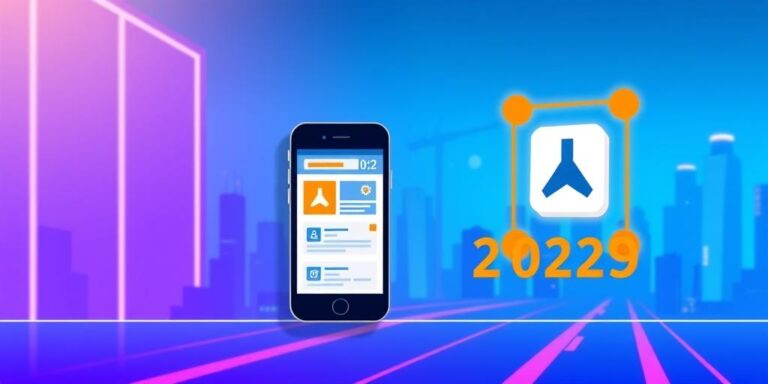Progressive Web Apps (PWAs) vs. Native Apps: The 2025 Landscape
In the rapidly evolving digital landscape, businesses face a crucial decision: Progressive Web Apps (PWAs) or Native Apps? As we approach 2025, understanding the strengths and weaknesses of each is more critical than ever. This article provides an informative comparison to help you make the right choice for your needs.
What are Progressive Web Apps (PWAs)?
PWAs are web applications that offer a native app-like experience. They are built using standard web technologies like HTML, CSS, and JavaScript but provide features such as offline access, push notifications, and device hardware access. PWAs are designed to be reliable, fast, and engaging.
Key Characteristics of PWAs:
- Discoverable: Easily found through search engines.
- Installable: Can be added to the user’s home screen without an app store.
- Linkable: Shared via URLs.
- Network Independent: Works offline or on low-quality networks.
- Progressive: Works for every user, regardless of browser choice.
- Re-engageable: Uses push notifications to keep users engaged.
- Responsive: Fits any form factor: desktop, mobile, tablet.
- Secure: Served via HTTPS.
What are Native Apps?
Native apps are applications developed specifically for a particular operating system, such as iOS or Android. They are installed from app stores and are designed to take full advantage of the device’s features and capabilities.
Key Characteristics of Native Apps:
- Optimized Performance: Designed to run efficiently on the specific operating system.
- Full Device Access: Can access all device features, such as GPS, camera, and contacts.
- App Store Presence: Benefit from the visibility and credibility of app stores.
- Offline Capabilities: Can offer robust offline functionality.
- Push Notifications: Engage users with timely updates and alerts.
PWAs vs. Native Apps: A Detailed Comparison
| Feature | PWA | Native App |
| :—————— | :—————————————————— | :——————————————————– |
| Development | Easier and faster development; single codebase. | More complex; requires separate codebases for each OS. |
| Cost | Generally lower development and maintenance costs. | Higher development and maintenance costs. |
| Performance | Near-native performance; continuously improving. | Optimized performance for the specific platform. |
| Distribution | Distributed via web; no app store required. | Distributed via app stores. |
| Discoverability | High discoverability via search engines. | Relies on app store search and marketing efforts. |
| Installation | Instant installation; no app store download required. | Requires downloading and installing from an app store. |
| Updates | Automatic updates; no user intervention needed. | Requires users to manually update the app. |
| Offline Access | Offers offline access to cached content and features. | Can offer robust offline functionality. |
| Device Access | Limited access to device features. | Full access to device features. |
| User Experience | Can provide a seamless, app-like user experience. | Typically offers a highly polished, native user experience. |
The 2025 Landscape: Trends and Predictions
As we look towards 2025, several trends will shape the future of PWAs and native apps:
- Improved PWA Capabilities: PWAs will continue to gain access to more device features, blurring the line between PWAs and native apps.
- Increased PWA Adoption: Businesses will increasingly adopt PWAs for their cost-effectiveness and ease of deployment.
- Enhanced User Experience: Both PWAs and native apps will focus on providing seamless and personalized user experiences.
- AI Integration: AI will play a significant role in enhancing the functionality and user experience of both PWAs and native apps.
- Focus on Performance: With the rise of 5G and faster internet speeds, both PWAs and native apps will prioritize performance and speed.
Making the Right Choice
Choosing between PWAs and native apps depends on your specific needs and priorities. Consider the following factors:
- Budget: PWAs are generally more cost-effective.
- Timeline: PWAs can be developed and deployed more quickly.
- Features: Native apps offer full access to device features, while PWAs have some limitations.
- Target Audience: Consider your audience’s preferences and behavior.
- Business Goals: Align your choice with your overall business objectives.
Conclusion
Both Progressive Web Apps and native apps have their unique advantages and disadvantages. By understanding the key differences and considering the trends shaping the 2025 landscape, businesses can make informed decisions that align with their goals and provide the best possible user experience. As technology evolves, the gap between PWAs and native apps will continue to narrow, offering more flexibility and options for businesses to engage with their customers.




